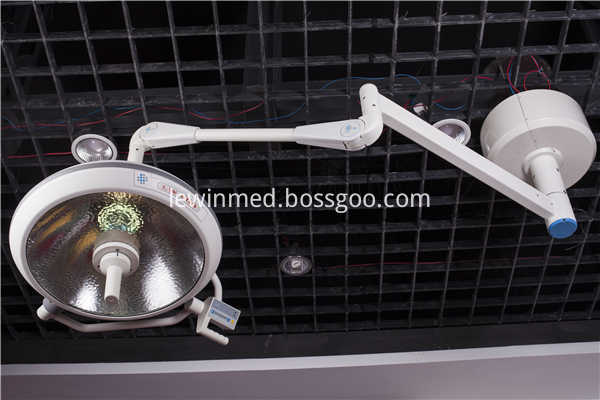Reasons for prevention and treatment of dead beans
Spring and summer are the seasons in which cowpea grows, and it is also the season in which cowpea dead vines occur frequently, especially in years when there is a lot of rain. Kidney bean vines generally cause about 20% reduction in production, causing serious destruction of gardens. In order to ensure the high yield and stable production of cowpea and meet the market demand, it is necessary to find out the cause of dead cowpea and formulate its effective prevention and control measures. The causes and prevention methods of cowpea vines are described below.
1 Harmful
Kidney beans are vegetables that are very warm, heat-resistant, drought-tolerant, and extremely water-resistant. They have a lot of rain, poor drainage, and stagnant water in the field, which causes the cowpea roots to suffocate, causing the plants to die. Control methods: First, open a good Sangou (Weigou, Yaogou, Xianggou), so that the ditch connected, timely drainage after the rain, in order to prevent the accumulation of water. The second is the use of sorghum cultivation.
Symptoms: mainly stem vines, leaves and pods are also harmed. The stems on the ground caused by partial collapse of the upper part of the wilting, dead, wet, diseased parts of white mycelium.
2 Diseases
Incidence conditions: temperature 25 ~ 28 °C, even after the rain or rain turn eyes, high humidity, easy to disease; low-lying or wet soil, high density, poor ventilation and light transmission, heavy onset.
Control methods: First, to strengthen the cultivation and management, rational close planting, pruning the top, improve the permeability between the rows and reduce the humidity in the field. The second is to remove diseased plants and reduce the source of bacteria. The third is chemical control: 53% Jinlei Duomi-Manganese zinc dispersible granules 500 times or 72% Kelu WP 500 times or 72.2% Prec 800x or 69% Ank manganese Zinc wettable powder 1000 times spray at the beginning of the disease, once every 7-10 days, 2 or 3 times in succession.
3 Blight
Symptoms: Fusarium wilt is a soil-borne disease. The bacteria invade from the root wound. The leaves of the diseased plant turn yellow from the bottom up. They are easy to fall off. The roots and necks are sometimes nicked. Finally, the whole plant is wilting and dead. The stem base and roots of the diseased plant are sectioned. The internal organization of Cambodia’s Cambodia became brown, with a serious external dark brown, and its roots rot. When the humidity is high, pink mildew layer forms on the surface of the diseased part.
Incidence conditions: continuous cropping and wet soil disease; soil loose, partial alkali, light incidence.
Control methods: First, three-year rotation with non-bean vegetables. The second is the selection of disease-resistant varieties. Such as early green beans, early-maturing No. 5 cowpea, green collar No. 4 cowpea, special early 30 cowpea and so on. The third is the cultivation of deep sorghum sorghum, combined with site preparation, lime 667m2 lime 100 ~ 15Okg. Fourth, the chemical control: 1 seed coating: with 25% Shiloh per 100kg seed 300ml amount of seed coating; 2 Pharmacy Irrigation: grasp before the onset or early onset of the use of Green Hunter No. 1 3000 times or 20% A Liquizide EC 1000 times or 70% thiophanate-methyl WP 500 times or agricultural anti-120 (100 times solution) or 15% Hymexazide 450 times, once every 10 days, continuous 2~ 3 times, but must be early defense, early rule.
4 root rot
Symptoms: Many symptoms begin to appear in the flowering and scarring period. The leaves of the diseased plants turned yellow and withered from the bottom up, and the leaves began to dry out from the leaf margins and were not easy to fall off. Easy to pull out of diseased plants. The stem base and roots were dark brown, slightly contracted, lateral roots shed, main roots rot, vascular bundles browned, and finally the diseased plants withered. When soil moisture is high, pink molds are produced at the base of the diseased stem.
Incidence: Onset of moderate temperature 24 ~ 28 °C, relative humidity 80%, low-lying terrain, flat planting, frequent irrigation, lack of fertility, the risk of severe disease in continuous cropping.
Prevention methods: First, with cabbage or onions and garlic for more than 2 years of rotation. The second is the timely drainage after the rain. The third is the use of decomposed organic fertilizer or Yuzhong Bioorganic Compound Fertilizer. Fourth, spraying or watering Luheng No. 1500 times or 70% thiophanate-methyl WP 500 times or root rot (300 times) in the initial stage of disease. Once every 10 days, 2 or 3 times in a row.
Single Dome Halogen Operating Lamp
Single Dome Halogen Operating Lamp with excellent color temperature control.By using color temperature compensation technology, the color reversion is uprised, and it is more suitable for the illumination of the complex surgery such as encephalon surgery and thorax surgery.Single Dome Halogen Operating Lamp are convenient to use. Reflector system designed in CAD; color temperature close to that of sunlight; making the tissue surface visible under natural color; depth of tubular light beams up to over 1200mm; uniform illumination effectively eliminating shadows under any circumstance.

Single Dome Halogen Operating Lamp,Single Dome Ceiling Operating Light,Single Dome Ceiling Ot Light,Single Dome Surgical Room Lamp
Shandong Lewin Medical Equipment Co., Ltd. , https://www.operatinglight.nl